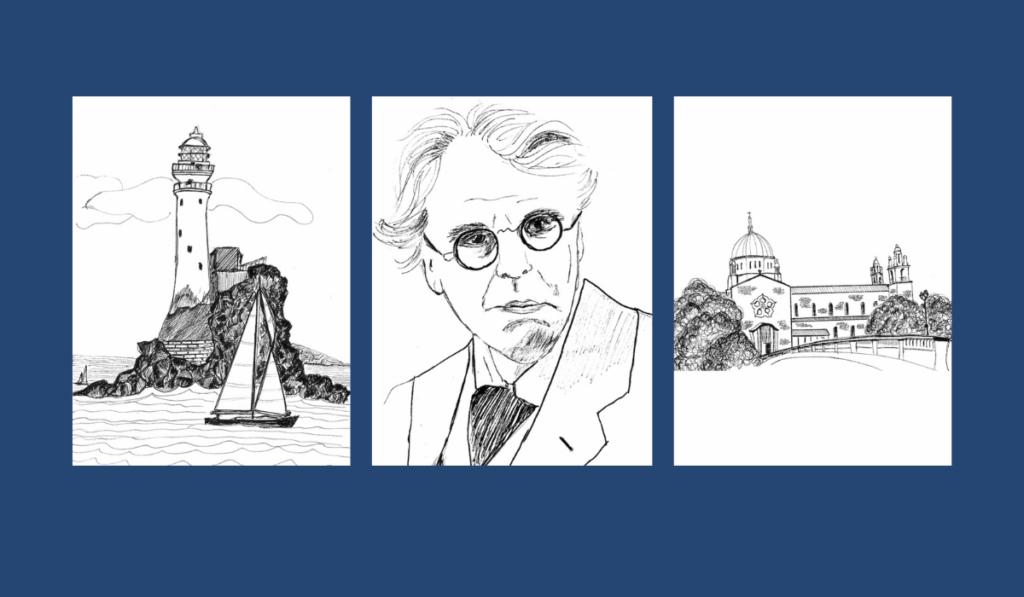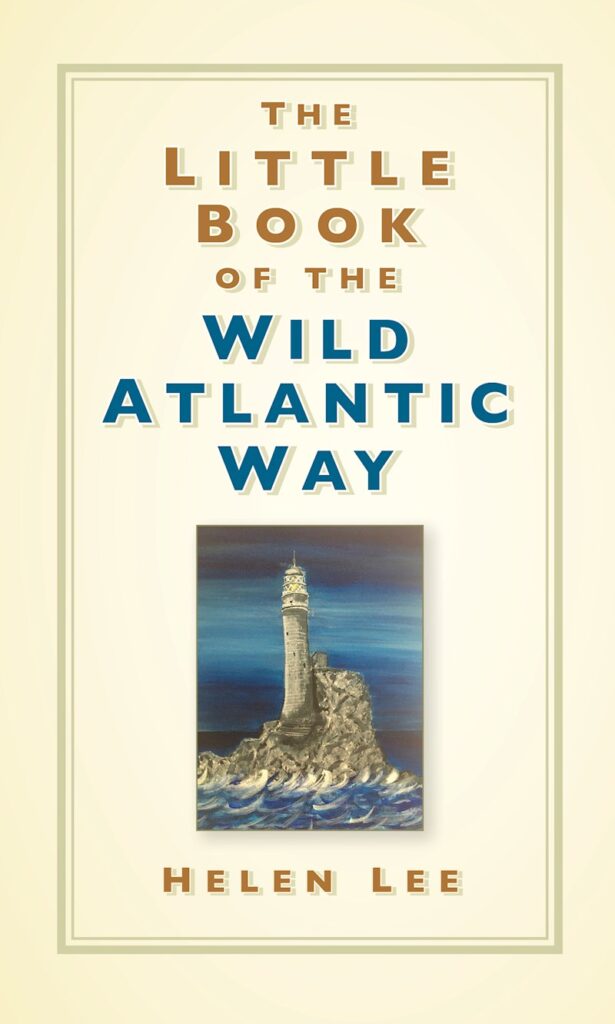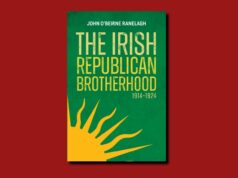
The Little Book of the Wild Atlantic Way|Helen Lee|The History Press|£14.99|Hardback|ISBN 9780750992015
by Helen Lee
Since its inception in 2014, most of the books published about the Wild Atlantic Way are photography books showing the stunning scenery along the 2,600km length of Ireland’s Atlantic coast. There is no shortage of photographic opportunities as waves ebb and flow on the beaches and crash on the rocky shoreline. The ever-changing weather means that from one minute to the next there is a different photograph.
But there is a lot more to the Wild Atlantic Way than just scenery. Centuries of Ireland’s history has played out along this coastline. People who became famous, and sometimes not so famous, patriots, explorers and writers were born or lived along on the Atlantic seaboard. Dotted along its length are lighthouses, castles, abbeys and towers, some ruined, some still standing strong against the Atlantic winds, but all with a history.
In 2019 1.6 million people visited the Cliffs of Moher in Co. Clare, making it the second most visited attraction in Ireland, after the Guinness Storehouse in Dublin. Some of those visitors were lucky to get photographs of the sheer cliffs in brilliant sunshine, others will not have been as fortunate. For the tourists, who only saw the mist, they could console themselves with a book of photographs from the gift shop. But did those visitors know that the nineteenth-century landowner, Cornelius O’Brien ordered the first paths to be laid along the Cliffs so that people could enjoy the view and that he also built the viewing tower still perched on the edge of the cliffs to this day? In fact, it was said that the only thing that O’Brien did not build in the district was the cliffs! Those same visitors probably passed through the nearby village of Liscannor not knowing that it was the birthplace, in 1841, of John Holland, the inventor of the submarine.

The Little Book of the Wild Atlantic Way is a miscellany of the historical events, people and buildings that contributed to making this coast more than just a photographer’s paradise. The book begins at the south of the Wild Atlantic Way, at Kinsale in Co. Cork, with the story of the Battle of Kinsale, when, in 1603 the Gaelic lords of Ireland, with assistance from the Spanish, were defeated by the forces of Queen Elizabeth I. Conveniently, this story finishes at the northern end of the Wild Atlantic Way, in Co. Donegal, when, in 1607, the Earls of Tyrone and Tyrconnell who had fought at Kinsale and were unwilling to live under English rule, fled Ireland from Rathmullan in what is known as The Flight of the Earls.
The first chapter of The Little Book of the Wild Atlantic Way begins with an historical timeline, outlining the significant events that occurred from prehistoric times to the present. Each of the following chapters is dedicated to a county or two. Beginning in Co. Cork, read about how the Fastnet Rock proved to be a challenging place to build a lighthouse. Often referred to as the ‘Tear Drop of Ireland’, it was the last land mark of Ireland that many an emigrant saw as they sailed for America. It was into Bantry Bay that Theobald Wolfe Tone sailed in 1796, with a fleet of French ships, ready to invade Ireland, only to be thwarted by bad weather.
In Co. Kerry, in the lead up the the Easter Rising of 1916, Sir Roger Casement attempted, unsuccessfully, to land a consignment of weapons at Banna Strand near Tralee. As a result the Rising almost did not go ahead. The first casualties of the Rising died near Killorglin.
On the Shannon Estuary at Foynes, Co. Limerick, a transatlantic flying boat port was opened in 1937. It was there that the Irish Coffee was invented.
On the other side of the estuary, in Co. Clare read the story of The Colleen Bawn, an innocent farm girl who was murdered in 1819.
The picturesque Dunguaire Castle, tucked into an inlet of Galway Bay at Kinvara has been in the ownership of some colourful characters. In the city of Galway read about the three St Nicholas churches in which Galwegians have worshipped since 1320.
Co. Mayo felt the full impact of one of the most significant events in Ireland’s history, the Irish Potato Famine of the 1840s. Fittingly the National Famine Memorial is located at Murrisk on Clew Bay at the foothill of Croagh Patrick. One of the most tragic stories of the Famine period occurred near there. The county also boasts the oldest known field system in Europe. The Ceide Fields, on the edge of the Atlantic coast are thought to date from 3200 BC.
In Co. Sligo read about how the poet William Butler Yeats died in France in 1939 and was later brought back to Ireland to be reburied at Drumcliffe, and his friend, Countess Markievicz, who was the first woman elected to the British House of Commons.
With just 6 km of coastline even Co. Leitrim has a story. In the seventeenth century, at a monastery on the banks of the Drones river, four monks wrote the first history of Ireland which became known as The Annals of the Four Masters.
Co. Donegal, with its much longer coastline was the birthplace of St Colmcille, who left Ireland for Scotland after causing a war. Read about the sunken treasure which still lies on the wreck of the Laurentic at the bottom of Lough Swilly. The ship was torpedoed by a German U-boat in 1917.
These are just a hint of the type of stories to read in The Little Book of the Wild Atlantic Way. So, if you are heading west this summer, and plan on touring any part of the Wild Atlantic Way, this ‘Little Book’ is the ideal companion book to keep in your glove compartment, and to take out and dip into, allowing you to take in more that just the spectacular scenery of The Wild Atlantic Way.











